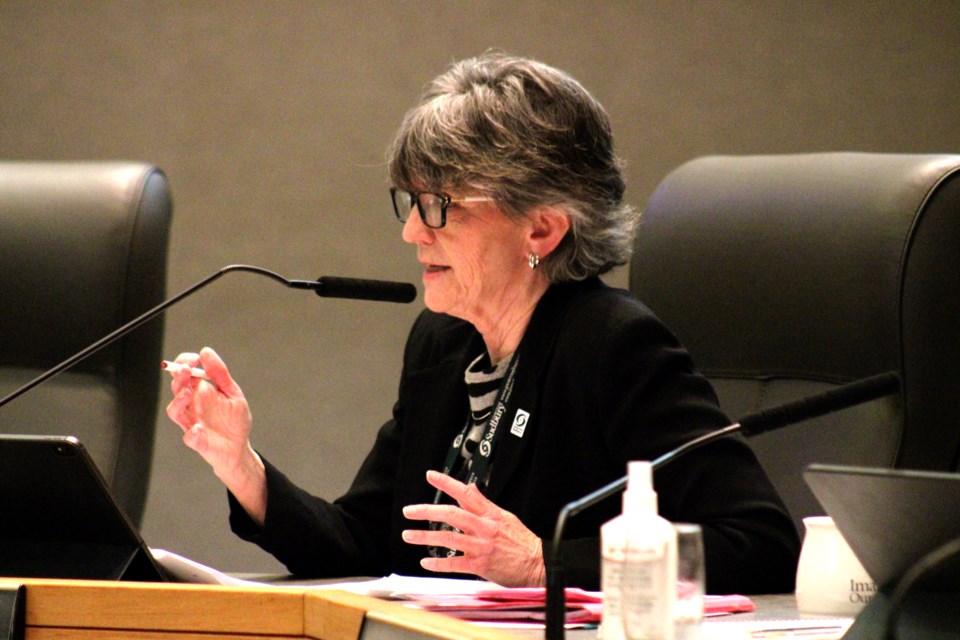Multiple in-person public meetings and online engagement sessions will launch by the end of February in reaction to proposed changes to Greater Sudbury’s fire/paramedic stations.
“It’s important to inform before consulting,” city communications director Marie Litalien told city council during Tuesday’s meeting. “We’re informing, but also we’re bringing questions and we’re learning more.”
The public engagement sessions come as a result of a motion by Ward 7 Coun. Natalie Labbée last month following public backlash regarding a long-awaited report on the city’s emergency services infrastructure, most of which hasn’t changed much since amalgamation in 2001.
A report by U.K.-based Operational Research in Health Ltd. and supplemented by city Fire and Paramedic Services Chief Joseph Nicholls proposes:
- Capreol, Levack, Dowling, Whitefish and Chelmsford should remain at their current sites.
- Consolidate Skead and Falconbridge into a new ideal site for Garson
- Consolidate Val Caron and Hanmer at current site in Val Thérèse
- Consolidate Vermilion Lake into Dowling
- Consolidate Beaver Lake into Whitefish
- Consolidate Wahnapitae and Coniston at a new ideal site
- Consolidate Waters, Lively and Copper Cliff at Anderson Drive
- Relocate the Minnow Lake station two kilometres north.
- Consolidate paramedics with fire services in Capreol
During Tuesday’s city council meeting, the city’s elected officials approved a plan for the city to organize a series of in-person open houses at fire stations affected by the consolidation recommendations, including those at Falconbridge, Val Caron, Hanmer, Beaver Lake, Wahnapitae, Coniston and Copper Cliff.
A location in Minnow Lake will also be organized, while a combined open house to cover Lively and Waters will be held in Waters, and the Skead Community Centre will fill in for the closed Skead station, and the Dowling Leisure Centre will fill in for the closed Vermillion Lake station.
These locations were chosen because they’re the sites most affected by the proposed changes, Litalien explained, noting that those unable to attend an in-person location can weigh in via an online engagement the city plans on setting up at overtoyou.greatersudbury.ca.
A printed consultation option will be available at the city’s Citizen Service Centres, and feedback will also be able to be provided by phoning the city’s customer service line at 311.
“My hope for this public consultation has always been about learning more and hearing from residents, but not just about their concerns, because they are valid and relevant, but also for finding solutions,” Labbée said during Monday’s meeting.
She was particularly enthused to see the public meetings take place at the affected fire halls, where people will be able to see what condition they are in first-hand.
Between the in-person, online, paper and phone options to weigh in, she said, “There’s no excuse for not participating in this process.”
The city will also offer engagement opportunities for staff, including paramedics and full-time and volunteer/part-time firefighters.
While some members of city council took Tuesday’s meeting as an opportunity to criticize the emergency stations report (Ward 3 Coun. Gerry Montpellier called it a “negative actions internet report”), Ward 9 Coun. Deb McIntosh took a moment to express her support.
“When someone calls 911, they don’t ask where the truck, ambulance or cruiser is coming from, they just want to know when the vehicle and emergency personnel will arrive,” she said.
“We do need to acknowledge that consolidating halls and reducing costs both now and in the future is a difficult change for people.”
Despite this, she later added, “Buildings don’t fight fires or connect communities, people do.”
After several years of debating multiple reports proposing changes to the city’s network of emergency services infrastructure, Ward 8 Coun. Al Sizer said he has about had enough.
“Holy Jumpin’, we’ve been at this so long,” he said. “Christmas, we’ve been at this for eight or nine damned years.”
During Tuesday’s meeting, Mayor Paul Lefebvre introduced a successful motion to have city administrators draft a report on the financial implications of:
- Status quo, wherein all existing stations receive the current level of maintenance.
- Existing footprint, where all current stations are repaired and renovated as required to fulfill expectations associated with emergency services legislation and service requirements.
- Changed footprint, where in accordance with the recommendations presented, a combination of renonations and consolidations occur to the city’s fire and paramedic stations.
This, he said, will help city council members make their final decisions, with the report to be released by the end of June. This date coincides with when the city plans on releasing the results of their public engagement efforts.
The report Lefebvre requested will include cost-avoidance opportunities, such as the need for fewer fire trucks, city CAO Ed Archer said.
Proposed changes to the city’s emergency services infrastructure come as a result of little having changed with the aging facilities since amalgamation.
The life cycle for stations is 50 years, and the average age of the city’s 24 locations is 48 years. If the Operational Research in Health Ltd. report’s recommendations were fully implemented (including consolidating the Azilda and Chelmsford stations, which city Fire and Paramedic Services Chief Joseph Nicholls advised against), the city’s overall 90th percentile response time would reduce by 10 seconds.
The city’s limited number of volunteer firefighters is also an issue, with some fire halls reporting few volunteer firefighters available to respond to calls. At both the Beaver Lake and Skead stations, which are both proposed to close, an average of only one volunteer firefighter responds to calls, which requires more than one fire station’s staff being called out.
For the full Operational Research in Health Ltd. report, click here. For Nicholls’ supplemental report, including his recommendations, click here.
Tyler Clarke covers city hall and political affairs for Sudbury.com.
